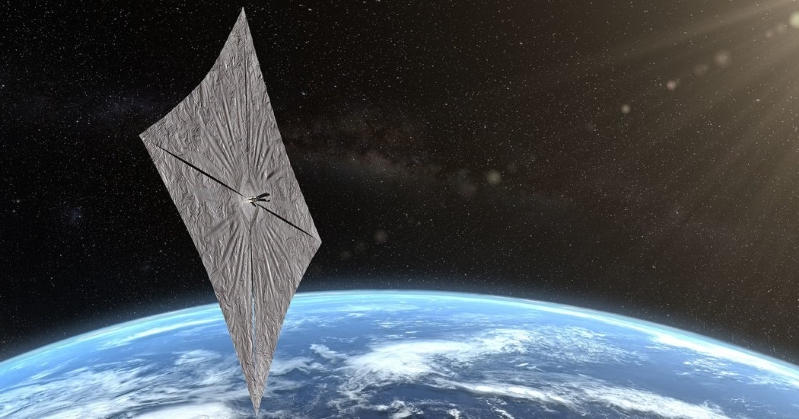SpaceX Achieves Milestone with Launch of US Craft Aimed at Moon Landing

I am a law graduate from NLU Lucknow. I have a flair for creative writing and hence in my free time work as a freelance content writer.

I am a law graduate from NLU Lucknow. I have a flair for creative writing and hence in my free time work as a freelance content writer.
This is true that all the living things get energy from the sunlight, and now, with the latest experiment carried out by The Planetary Society through its LightSail 2 spacecraft, it is confirmed again. Bill Nye, CEO of the non-profit organisation, announced today that the organisation’s experimental bread-loaf-sized, solar-powered spacecraft has successfully raised its orbit with the help of sunlight.
“Today, we
declare mission success. We’re going to a higher orbital altitude
without rocket fuel, just with the push of sunlight,” Nye said
in a press conference.
The spacecraft was launched on 25th June from NASA’s Kennedy Space Center, along with the other payloads, with the help of the SpaceX Falcon Heavy rocket and was deployed in its solar sail on 23rd July. The solar sail is made of four triangular sails of shiny Mylar. Since the deployment of the craft, the team LightSail have been observing and supervising every movement of the spacecraft.

According to the
team, LightSail 2 was moving slowly upward in the Earth’s orbit,
and it has raised its apogee about 2 kilometres in the past four
days. The 5 kilograms CubeSat had been keeping the records about the
progress of the craft, and on July 2, it sent the information about
its successful propelling to the Earth’s orbit.
The solar sail is
344 square foot in area. The light particle from the sun bounce from
the shiny sails and generate a small amount of force. With the
continues bouncing of the light, particles make this force even
stronger and push the craft forward, raising the craft in its orbit,
that too, without the use of fuel.
It has been over a decade since The Planetary Society has been working on the LightSail program, and the previous experiment with the LightSail was a fail. The current mission is crowdfunded through about 40,000 donations, raising $7 million.
LightSail 2 has
become the first spacecraft of this size to rise its orbit with solar
sailing, and the first to be propelled by solar sailing in the Earth
orbit. Usually, the spacecraft make use of fuel engine to a propeller
in the space, but the success of LightSail 2 is indicating that in
future there can be big spacecraft that will consume the photons for
propelling.
The orbit raised by
LightSail 2 is slowly forming an elliptical shape, and since the
orbit is more towards the Earth’s atmosphere, the LightSail team
has estimated that it will be dying within a year. But the success of
this experiment has raised new hopes for people.

Yashica is a Software Engineer turned Content Writer, who loves to write on social causes and expertise in writing technical stuff. She loves to watch movies and explore new places. She believes that you need to live once before you die. So experimenting with her life and career choices, she is trying to live her life to the fullest.